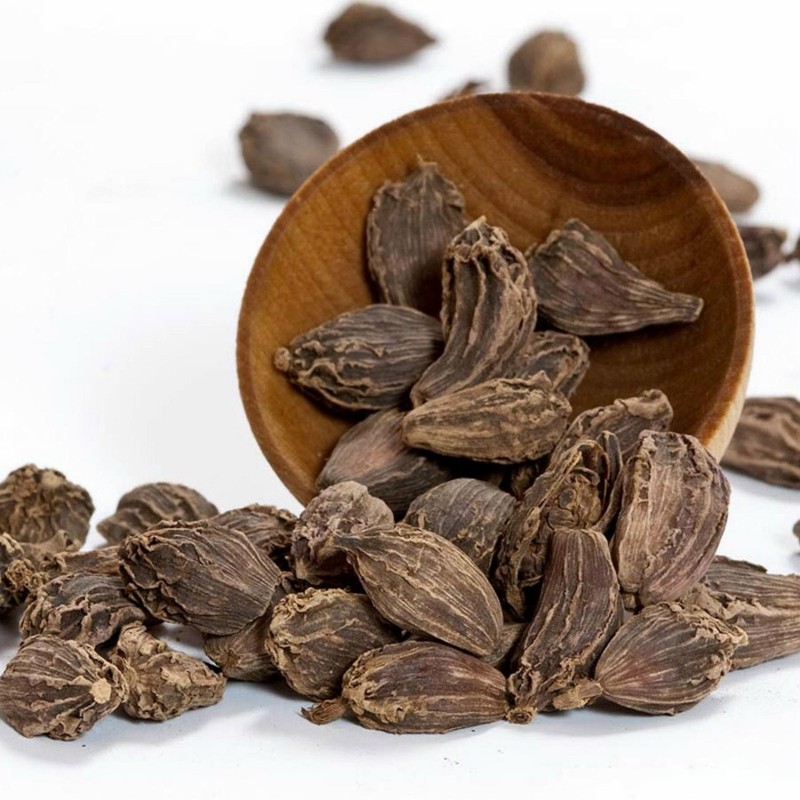
Variety from India





Black Cardamom Seeds (Elettaria cardamomum)
Price for Package of 5 seeds.
Elettaria cardamomum, commonly known as green or true cardamom, is a herbaceous perennial plant in the ginger family, native to southern India. It is the most common of the species whose seeds are used as a spice called cardamom. It is cultivated widely in tropical regions and reportedly
Elettaria cardamomum, commonly known as green or true cardamom, is a herbaceous perennial plant in the ginger family, native to southern India. It is the most common of the species whose seeds are used as a spice called cardamom. It is cultivated widely in tropical regions and reportedly naturalized in Réunion, Indochina and Costa Rica.
Growth
Elettaria cardamomum is a pungent aromatic herbaceous perennial plant, growing about to 2–4 m in height. The leaves are alternate in two ranks, linear-lanceolate, 40–60 cm long, with a long pointed tip. The flowers are white to lilac or pale violet, produced in a loose spike 30–60 cm long. The fruit is a three-sided yellow-green pod 1–2 cm long, containing several black and brown seeds.
Uses
The green seed pods of the plant are dried and the seeds inside the pod are used in Indian and other Asian cuisines, either whole or ground. It is the most widely cultivated species of cardamom; for other types and uses, see cardamom.
Cardamom pods as used as a spice
Ground cardamom is an ingredient in many Indian curries and is a primary contributor to the flavour of masala chai. In Iran, cardamom is used to flavour coffee and tea. In Turkey, it is used to flavour the black Turkish tea, kakakule in Turkish.
As well as in its native range, it is also grown in Nepal, Vietnam, Thailand, and Central America. In India, the states of Sikkim and Kerala are the main producers of cardamom; they rank highest both in cultivated area and in production. It was first imported into Europe around 1300 BC.
Wash the seeds in lukewarm water to remove the mucilage. Allow the seeds to dry in the shade.
Put the cardamom seeds in a glass jar, and then put the glass jar in a tray full of cold tap water from your sink. The water should come halfway up the sides of the jar. Let the jar sit in the water for a few minutes until the glass feels cool to the touch.
Pour a 2.5 percent nitric acid solution over the cardamom seeds in the jar slowly. Coat all surfaces of the seeds. Stir the seeds with a spoon. After two minutes of stirring, drain the nitric acid solution from the jar with a strainer.
Put a clean strainer in the sink, and then put the seeds in the strainer. Rinse the cardamom seeds under running water. Transfer the seeds to a bowl of lukewarm water and allow them to soak overnight. This scarification breaks the hard coats of the cardamom seeds.
Select a site in the garden for the cardamom seeds. Cardamom prefers moist soil that seldom dries out. It thrives in filtered shade.
Plant cardamom seeds directly in the garden after the danger of frost passes. Sow the cardamom seeds about 1/2 to 1 inch apart on top of the soil. Make rows 4 to 6 feet apart.
Cover the cardamom seeds with a thin layer of soil. Spread a thin layer of twigs over the seed bed. Cover the twigs with straw or grass. Water deeply until the soil feels moist.
Watch for germination. Cardamom germination usually takes between 20 and 25 days, but can take up to 40 days. When germination occurs, remove most of the mulch, leaving only a thin layer around the seedlings. Provide overhead shade to protect seedlings from bright sun.
Data sheet

 Reviews (0)
Reviews (0)